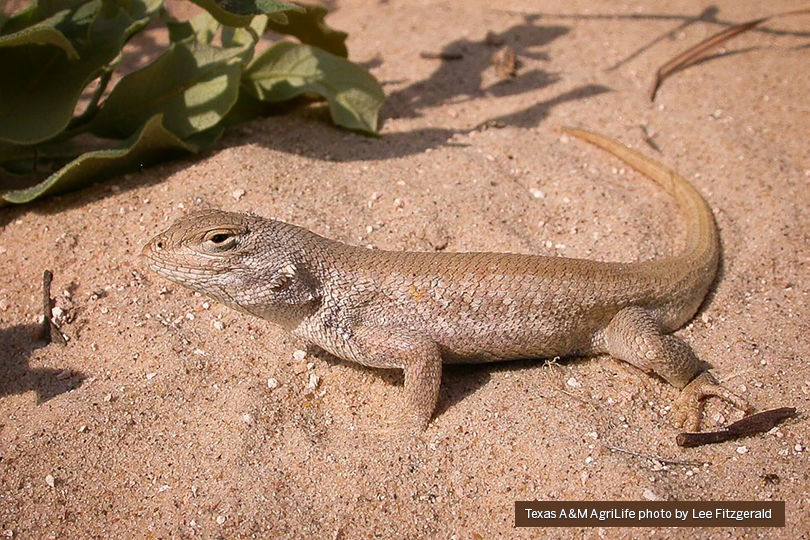The U.S. Fish and Wildlife Service (USFWS) is now accepting comments on an Enhancement of Survival Permit Application and a draft Environmental Assessment for the dunes sagebrush lizard.
The lizard is a rare species found only in the active and semi-stable shinnery oak dunes in the Permian Basin of West Texas and southeastern New Mexico.
It was first listed as a candidate for protection under the Endangered Species Act by USFWS in 2001.
One of the documents up for review is the Enhancement of Survival Permit Application. Permits may be issued to non-federal landowners participating in a Candidate Conservation Agreement with Assurances (CCAA).
The permit would cover the incidental “take” of the dunes sagebrush lizard associated with oil and gas exploration and development, sand mining, renewable energy development and operations, pipeline construction and operations, local government activities, agricultural activities and general construction activities within the CCAA permit area that could affect suitable habitat.
The enhancement of survival permit application proposes to authorize the development of 34,690 acres of suitable dunes sagebrush lizard habitat over the next several decades in Andrews, Gaines, Crane, Ector, Ward and Winkler counties in Texas.
These agreements encourage landowners to take actions to benefit species while also providing assurances that they will not be subject to additional regulatory restrictions for the life of the permit.
If approved, the requested permit would become effective and authorize incidental take of the dunes sagebrush lizard should it become federally listed during the life of the permit and CCAA under the Endangered Species Act of 1973. The permit would remain in effect for up to 23 years—until the CCAA’s expiration date or until surrender by the permittee, unless it is suspended or revoked by the USFWS.
The primary threat to the lizard is the loss of habitat associated with oil and gas development and sand mining near and in dune complexes.
USFWS encourages the public to provide input and comments during the 30-day public comment period through Dec. 21.

